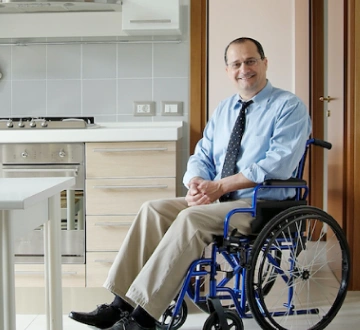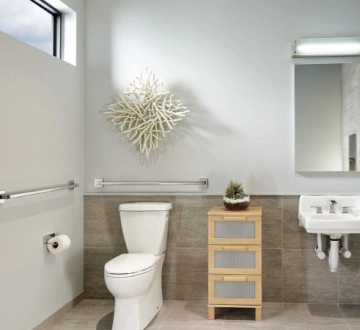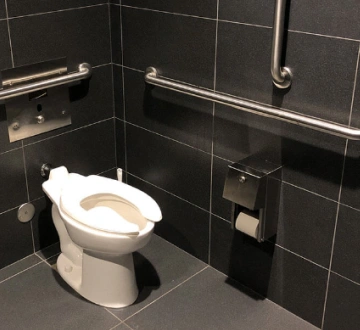Aging Gracefully, Living Comfortably
Our Age In Place team helps you live safely and comfortably at home. We provide personalized solutions to enhance accessibility and improve daily living as your needs evolve. With smart modifications and expert care, we support your independence for the long term.
Stay where you’re happiest—at home!
Entrances and Accessibility
- Ramps and Zero-Step Entry: Ramps or zero-step thresholds should be installed for wheelchair users and those with mobility issues. Doorways should be at least 32 inches wide to accommodate wheelchairs or walkers.
- Handrails: Secure handrails along pathways, stairs, and ramps provide additional support.
- Thresholds: Low or beveled thresholds reduce tripping hazards.
Flooring
- Non-Slip Surfaces: Install non-slip flooring in areas prone to moisture like bathrooms and kitchens. Carpeting should be low-pile to avoid trip hazards.
- Clear Pathways: Keep floors clutter-free and remove rugs or secure them with non-slip pads.
Bathrooms
- Grab Bars: Install grab bars near toilets, showers, and bathtubs to support balance and prevent falls.
- Walk-In Tubs/Showers: Curbless, walk-in showers or tubs with built-in seating make bathing safer and more accessible.
- Raised Toilet Seats: Raised seats make sitting and standing easier.
- Anti-Scald Devices: These can prevent accidental burns in showers and sinks.
Kitchens
- Accessible Cabinets: Lowered cabinets and pull-out shelves make items easier to reach.
- Lever-Style Faucets: Easier to operate for those with limited hand strength compared to traditional knobs.
Lighting
- Motion-Sensor Lights: These help guide elderly individuals in low-light areas such as hallways and bathrooms.
- Bright, Even Lighting: Well-lit spaces prevent trips and falls. Consider night lights in key areas like bedrooms and bathrooms.
Stairs and Steps
- Stair Lifts: For multi-story homes, stair lifts or chair lifts provide safe mobility between floors.
- Contrasting Colors on Steps: Marking the edges of steps with contrasting colors can enhance visibility.
Door and Window Hardware
- Lever-Style Handles: These are easier to use than traditional knobs for those with arthritis or limited grip strength.
- Wide Swing Hinges: These allow doors to open fully, giving more space for wheelchairs or walkers.
Safety and Monitoring
- Emergency Alert Systems: Devices that can be worn or activated during emergencies, allowing elderly individuals to call for help quickly.
- Smart Home Technology: Voice-activated devices and sensors can help monitor movements and safety.
- Smoke and Carbon Monoxide Detectors: Install these with strobe lights or vibrating alerts for those who are hard of hearing.
Accessible Electrical Controls
- Lower Light Switches and Raised Outlets: Light switches should be installed lower, and electrical outlets raised higher to accommodate those in wheelchairs.
General Safety
- Home Security Systems: These systems provide additional peace of mind with cameras, motion detectors, and alarms.
- Automatic Shut-Off Devices: These can be applied to stoves or space heaters to prevent accidental fires. These ADA-compliant safety features ensure that homes are not only safer for elderly residents but also more functional and user-friendly for those with mobility or cognitive limitations.
Our Works


